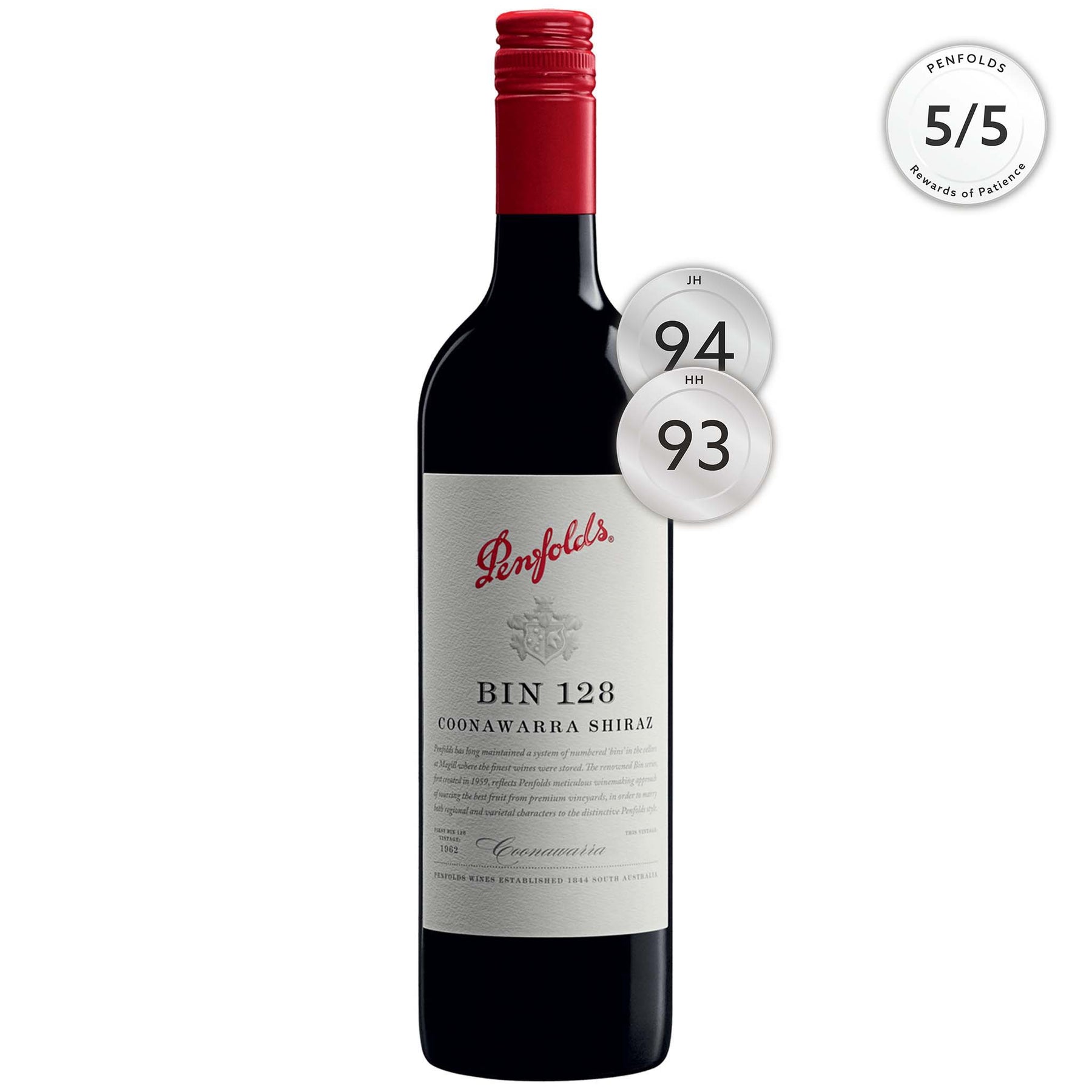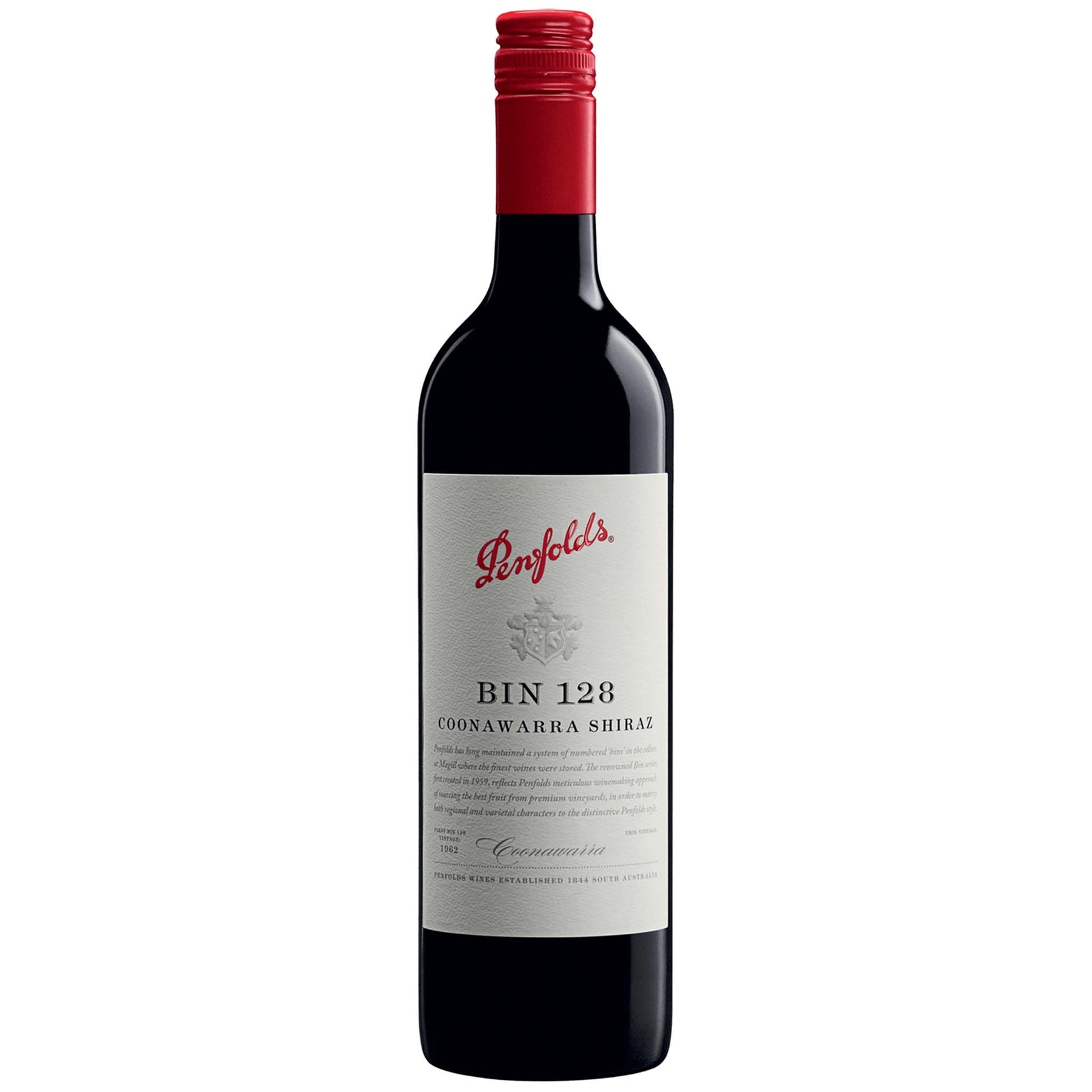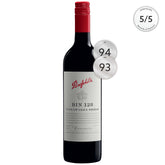

Penfolds Bin 128 Coonawarra Shiraz 2014
Style: Red Wine
Variety: Shiraz
Closure: Screwcap
Penfolds Bin 128 Coonawarra Shiraz 2014
Warehouse
34 Redland Drive
Vermont VIC 3133
Australia
Critic Score: 94
Alcohol: 14.5%
Size: 750 ml
Drink by: 2045
Penfolds Rewards of Patience tasting panel 2021 - 5/5 rating
Penfolds Bin 128 is sourced from the unique terra rossa soils of Coonawarra, a region that exemplifies the perfume, transparency and seductive nature of cool climate red table wines. Coonawarra has remained the sole source of shiraz fruit for Bin 128 since the inaugural release of the 1962 vintage. In order to further enhance the regional qualities of Bin 128, the wine is matured in a mixture of new and seasoned French oak hogsheads, a method that was refined during the 1980's when the transition was made from American to French oak. The cool climate Bin 128 Coonawarra Shiraz provides an interesting counterpoint to the more opulent and richly concentrated warm climate Bin 28 Shiraz.
"The palate is more dense and textured than usually found in Coonawarra, with extract and fleshy density galore. Long, long carry." Huon Hooke
The 2014 Bin 128 Kalimna was matured for 12 months in French oak hogsheads (26% new, 43% 1-y.o., 31% 2-y.o.).
"Medium-deep crimson. Classic ripe cassis, blackberry and mulberry aromas with underlying savoury vanilla oak and hints of herbs/capsicum. Enveloping rich cassis with mocha/vanilla oak notes, fine-ripe grainy tannins and capsicum leaf notes. Finishes velvety firm and long. A superb vintage. Drink now to 2045.
Vintage Conditions: The second wettest winter recorded in 28 years ensured plenty of ground water reserves for the 2014 vintage. Continued spring rainfall was almost double the average for that period. Flowering occurred from the last week of November through to mid-December. Cold, wet and windy weather at flowering resulted in an uneven fruitset with small berries affecting bunch weights. Temperatures during January and February were hot and dry with eight days of temperatures exceeding 40C. Hot weather accelerated ripening of many grape varieties, with harvest starting mid-February. The last grapes were picked the first week in May making the 2014 harvest one of the longest on record." Penfolds
Expert reviews
"Medium-deep crimson. Classic ripe cassis, blackberry and mulberry aromas with underlying savoury vanilla oak and hints of herbs/capsicum. Enveloping rich cassis with mocha/vanilla oak notes, fine-ripe grainy tannins and capsicum leaf notes. Finishes velvety firm and long. A superb vintage." Penfolds Rewards of Patience tasting panel 2021 - 5/5 rating
"Deep crimson-purple; a complex fusion of blackberry fruit, cedary oak and hints of spice is a promising start, and the medium to full-bodied palate takes the bouquet onto another level. A long way in front of the sometimes skinny or bony Bin 128s of yesteryear. For the record, matured in 100% French oak. Drink by: 2034." James Halliday, Halliday Wine Companion - 94 points
"Deep red/purple colour. Linseed oak and fine spice aromas, the palate more dense and textured than usually found in Coonawarra, with extract and fleshy density galore. Long, long carry, and relatively firm (for the region) finish. Drink 2016-2031." Huon Hooke, The Real Review - 93 points
Awards
Penfolds Rewards of Patience tasting panel 2021 - 5/5 rating
After the success of early sherries and fortified wines, founders Dr Christopher and Mary Penfold planted the vine cuttings they had carried on their voyage over to Australia. In 1844 the fledging vineyard was officially established as the Penfolds wine company at Magill Estate.
As the company grew, so too did Dr Penfold's medical reputation, leaving much of the running of the winery to Mary Penfold. Early forays into Clarets and Rieslings proved increasingly popular, and on Christopher's death in 1870, Mary assumed total responsibility for the winery. Mary's reign at the helm of Penfolds saw years of determination and endeavour.
By the time Mary Penfold retired in 1884 (ceding management to her daughter, Georgina) Penfolds was producing 1/3 of all South Australia's wine. She'd set an agenda that continues today, experimenting with new methods in wine production. By Mary's death in 1896, the Penfolds legacy was well on its way to fruition. By 1907, Penfolds had become South Australia's largest winery.
In 1948, history was made again as Max Schubert became the company's first Chief Winemaker. A loyal company man and true innovator, Schubert would propel Penfolds onto the global stage with his experimentation of long-lasting wines - the creation of Penfolds Grange in the 1950s.
In 1959 (while Schubert was perfecting his Grange experiment in secret), the tradition of ‘bin wines' began. The first, a Shiraz wine with the grapes of the company's own Barossa Valley vineyards was simply named after the storage area of the cellars where it is aged. And so Kalimna Bin 28 becomes the first official Penfolds Bin number wine.
In 1960, the Penfolds board instructed Max Schubert to officially re-start production on Grange. His determination and the quality of the aged wine had won them over.
Soon, the medals began flowing and Grange quickly became one of the most revered wines around the world. In 1988 Schubert was named Decanter Magazine's Man of the Year, and on the 50th anniversary of its birth, Penfolds Grange was given a heritage listing in South Australia.
Despite great success, Penfolds never rests on its laurels. In 2012 Penfolds released its most innovative project to date - 12 handcrafted ampoules of the rare 2004 Kalimna Block Cabernet Sauvignon.
Two years later, Penfolds celebrated the 170th anniversary – having just picked up a perfect score of 100 for the 2008 Grange in two of the world's most influential wine magazines. Today, Penfolds continues to hold dear the philosophies and legends – '1844 to evermore!'.

South Australia
South Australian is responsible for more than half the production of all Australian wine. It is home to more than 900 wineries across 18 wine regions. The regions are Adelaide Hills, Adelaide Plains, Barossa Valley, Clare Valley, Coonawarra, Currency Creek, Eden Valley, Kangaroo Island, Langhorne Creek, McLaren Vale, Mount Benson, Mount Gambier, Padthaway, Riverland, Robe, Southern Fleurieu, Southern Flinders Ranges and Wrattonbully.
Many of the well-known names in the South Australian wine industry established their first vineyards in the late 1830s and early 1840s. The first vines in McLaren Vale were planted at Reynella in 1839 and Penfold's established Magill Estate on the outskirts of Adelaide in 1844.
South Australia has a vast diversity in geography and climate which allows the State to be able to produce a range of grape varieties - from cool climate Riesling in the Clare and Eden Vallies to the big, full bodied Shiraz wines of the Barossa Valley and McLaren Vale. Two of Australia's best-known wines, Penfolds Grange and Henschke Hill of Grace, are produced here. There is much to discover in South Australia for the wine lover.



